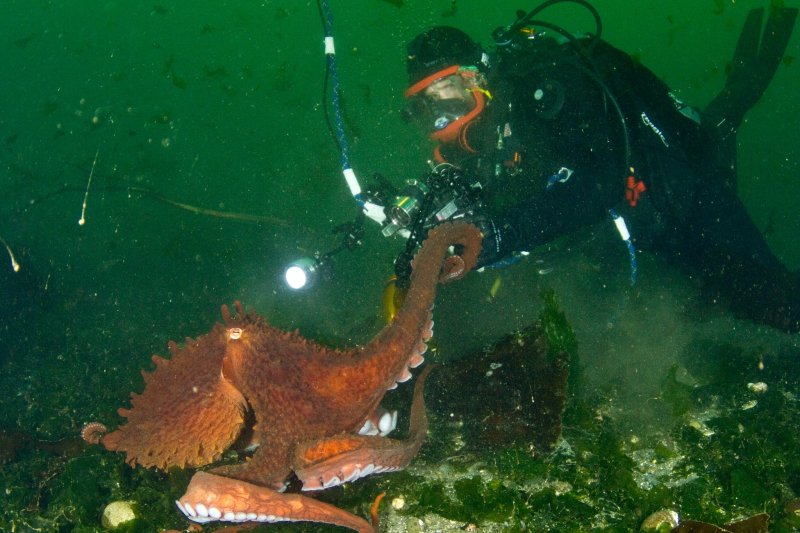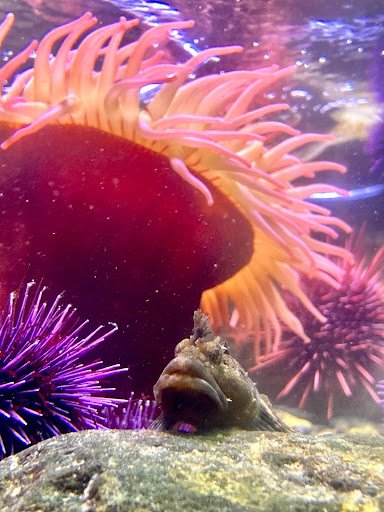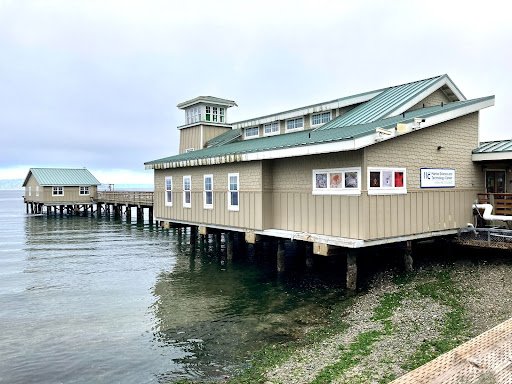Trio of Western alums help keep Highline College’s MaST Aquarium afloat
Three Western Washington University alumni have turned their passion for the ocean and its creatures into careers with the MaST Center Aquarium located at Highline College.
The MaST (which stands for Marine Science and Technology) Center Aquarium is a 2,500- square facility that serves Highline students and employees as well as the public South Sound region.
Rus Higley graduated from Western in 1994 with a degree in Biology with an emphasis in Marine Biology, and is now the director at the aquarium. Emily Bjornsgard (‘20) is the lead aquarist, and Lily Gray (‘21) is an aquarist.
When Higley arrived at Highline in 1999, there was an abandoned pier situated in a promising location for an aquarium facility, but it was lacking running water and other important amenities. Basic work was done and the center first opened to the public in 2003. Then from 2006 until 2008, a completely new facility was built that is still in use today. To facilitate the construction of these new tanks, the SEA Discovery Center, Western's aquarium exhibit, helped donate necessary supplies.
Higley said his education at Western gave him the base of knowledge necessary to succeed at MaST.
“As a freshman at WWU, I didn't have the discipline I needed to succeed, and I ended up on academic probation. WWU helped me turn that around and I learned to think about how to solve challenges. The MaST Center Aquarium is a great example of bringing a bunch of different things together including a lot of dreams. Being director at the aquarium, I have many tasks that I am in charge of so I have to play many roles, and my experiences of failures and successes at Western helped me succeed here,” Higley said.
Working at the MaST aquarium is much more than just a job for Higley, Bjornsgard and Gray. Each day is different for them and they have to fill many different roles in order for the aquarium to be successful.
“One day we might be diving and collecting animals, or performing health exams to ensure all the animals in the facility remain healthy. The next day we might be building new aquarium systems, from the construction of the tank stand to plumbing the tanks and life support equipment to the interior tank decor design. Think of the fish and invertebrates as aqua-nauts, and we (the animal care team) are mission control,” Bjornsgard says.
The primary goal to provide excellent care to the animals in the aquarium never changes, but because there are so many components in how to achieve that goal, there's always something new to do or learn on the job.
Bjornsgard said spending time at Western’s Shannon Point Marine Center played a huge role in getting her job at MaST.
“My junior year at Western I took many useful classes at Shannon Point. The organisms I was ID’ing there t are essentially all the same down here at Highline. The knowledge and connections I made at Western and at Shannon Point were huge in my career. Because the MaST Center is a flow-through facility, I need to be aware of the biology and ecology of the area around the aquarium, as well as inside the aquarium. Many of the ecological and biological principles I use daily are from lessons I learned at Western.” Bjornsgard said.
Gray, who graduated with a degree in Biology with an emphasis in marine biology, said during COVID she did not have access to as much hands-on research, but her time at Shannon Point was still hugely influential.
“During my senior year I took an algae class with Brady Olson, a professor at Shannon Point, and through this class I was able to learn how to ID certain algae types. Learning this helped me identify the algae I work with day to day at my job,” Gray said.
Highline College works with Western every year to provide internships for Marine Biology students.
Anyone interested in interning or volunteering at MaST can visit its website at mast.highline.edu for more information.



